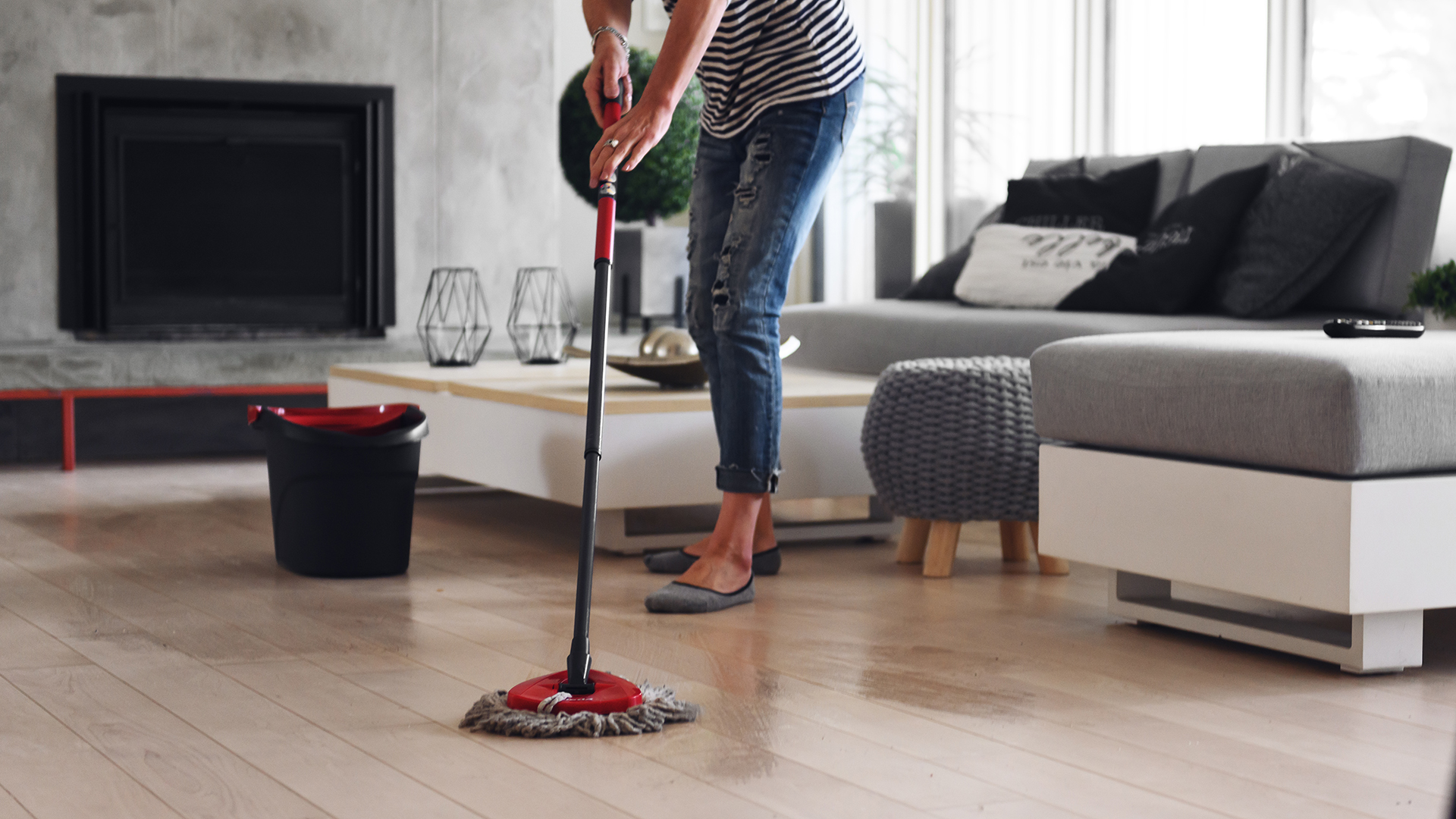Knowing how to clean a mop effectively is an essential skill. Without cleaning the mop head between uses, you risk transferring today’s dirt onto tomorrow’s floors.
As well as being less effective, a dirty mop can introduce new bacteria and leave muddy streaks behind.
Cleaning your mop is key to knowing how to clean hardwood floors effectively, whether you’re working with one of the best steam mops or a traditional model.
The following method, approved by a cleaning expert, is a quick and simple way to master how to clean a mop. Paired with proper mopping techniques, your mop will be sanitized and ready to deal with even the grubbiest floors.
How to keep a mop clean
1. Start by rinsing the mop head with warm water
Rinsing the mop head removes any surface-level impurities such as dirt or debris. “A dirty mop can become less effective at cleaning surfaces, and the dirt and grime that builds up on the mop can cause it to wear out more quickly,” explains Hugo Guerrero, a Certified New York House Cleaning Technician (HCT) from New York.
2. Fill a bucket with warm water and add dish soap or laundry detergent
A few squirts of dish soap or laundry detergent should be enough to effectively clean your mop.
3. Swish the mop around in the soapy water until it's clean
Paired with soap, a gentle swishing motion kills the germs and bacteria.
“Cleaning your mop helps to maintain its effectiveness and extend its lifespan. A dirty mop can become less effective at cleaning surfaces, and the dirt and grime that builds up on the mop can cause it to wear out more quickly. A dirty mop can harbor germs and bacteria, which can be spread to other surfaces when you use the mop to clean them,” explains Hugo Guerrero, a certified House Cleaning Technician (HCT) from New York.
4. Rinse the mop with warm water
When the mop is clean, the water should run clear.
5. Try a diluted bleach solution
If water alone doesn’t wash away the stains, you require a heavier-duty approach. Guerrero suggests preparing a solution of one part bleach to 10 parts water and repeating the above steps.
6. Hang the mop to dry
Storing a wet mop breeds bacteria. It should be hung to dry in a well-circulated area of your home or garden.
Mopping tips
• Vacuum first
Unlike mops, vacuums can suck stubborn pieces of debris from small gaps and corners.
• Use a small amount of dish soap
A couple of pumps of mild dish soap is sufficient to clean your floors without leaving behind a soapy residue.
• Use warm water to loosen up stubborn grime
• Replace the bucket water if it turns cloudy
If the water turns cloudy or brown, you risk reintroducing dirt and bacteria to the floors.
• Clean your mop at least once a week or between every use
“This will help to ensure that your mop stays clean and effective, and will help to prevent the spread of germs and bacteria,” Guerrero explains.
Discover more guides for the home…
Best deep clean vacuums
Best carpet cleaners
Best handheld vacuums
Best robot vacuums

